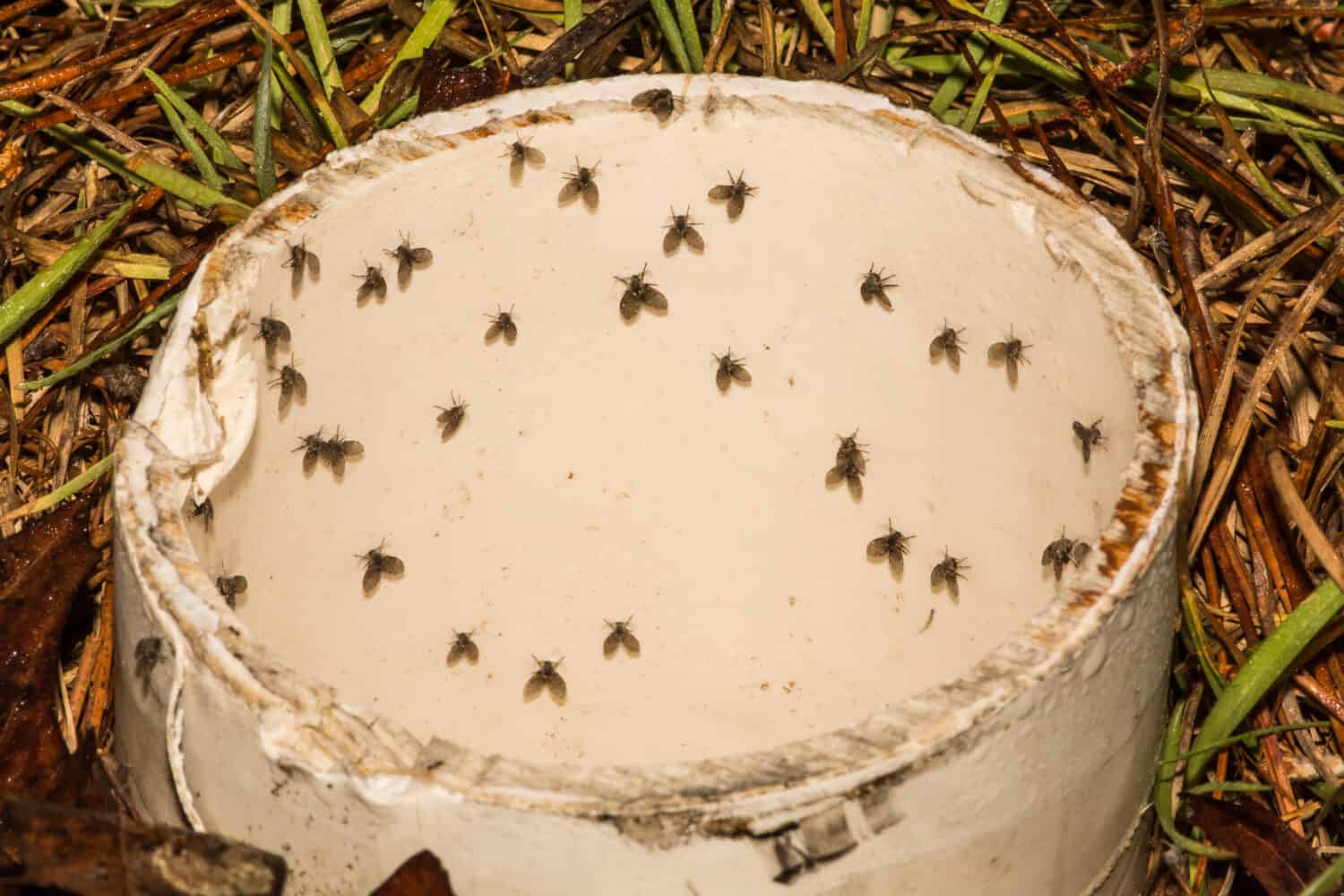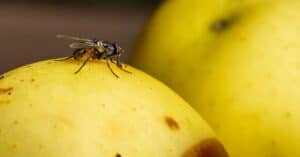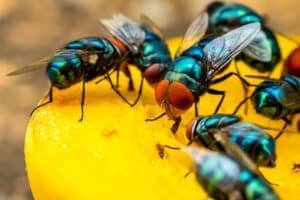A fly buzzing around your home usually isn’t a big deal. They slip in through the door when we’re bringing in groceries and buzz around the kitchen until we eventually notice them. But seeing more than a few at a time inside your home can be troubling, especially if they seem to always be around no matter how many times you swat them. If you notice small flies resting on the walls near the bathroom or kitchen, you may have a drain fly infestation. But what attracts drain flies? Are they harmful? And what steps can you take to battle the infestation?
What Are Drain Flies?

Their larvae need water and organic matter as they grow into pupae, which takes around two and a half weeks.
©Cherdchai Chaivimol/Shutterstock.com
Drain flies are a species of true flies with an appearance similar to a moth. They are a common household pest worldwide, especially areas in tropical or temperate locations. They are covered in a coat of dense hairs and feature broad wings, so they may be mistaken for small moths. And they are a little more than two millimeters long.
These pesky flies only live around 12 days, surviving off water and flower nectar. Adults are weak fliers and spend most of their short lives clinging to walls. Their larvae need water and organic matter as they grow into pupae, which takes around two and a half weeks. Drain flies get their name from their propensity to infest household drains.
These pests can be difficult to get rid of due to their water-repellant hairs, meaning waterborne toxins, like bleach, have little effect on them. You can check suspected drains for infestations by placing a glass cup or clear bag over the opening to see if adult flies appear.
Are Drain Flies Harmful?
Drain flies are considered relatively harmless. They do not bite or sting, nor do they spread harmful diseases. However, they can induce asthma symptoms and allergenic reactions in those susceptible. They also live in decaying matter and can spread around bacteria from rotten food and sewage. In rare cases, their larvae cause myiasis, a parasitic infection of human skin, during which they grow inside their human host.
Why Do I Suddenly Have Drain Flies?

They are attracted to rotting food, feces, human hair, and moisture. You can also find them in humid, warm, and poorly ventilated areas.
©chakapong/Shutterstock.com
Drain flies are attracted to dirty drains, standing water, and slow-moving or clogged drains. These flies need water and organic matter to mate and reproduce. They enter your house through small cracks in windows or doors and find their way to a desirable location, such as kitchen or bathroom sinks and shower drains. And because their reproduction time can be as little as 48 hours, a few flies can quickly turn into a full-blown infestation.
So, what attracts drain flies? Stagnant water and bacteria build-up
Don’t be surprised if you find these pests congregating near a clogged or slow-moving drain or a sink (such as a guest bathroom) that doesn’t get much use. They are attracted to rotting food, feces, human hair, and moisture. You can also find them in humid, warm, and poorly ventilated areas of your home, such as an older bathroom with a blocked drain. They can also infest rarely-used toilets, refrigerator drain pans, and standing water around leaking pipes.
What Smell Attracts Drain Flies?
Drain flies are attracted to the smell of sewage, rotten food, moisture, mildew, and other bacteria. These smells often come from kitchens and bathrooms, where moist organic matter frequently becomes trapped in pipes.
Some theories suggest drain flies are attracted to vinegar. If you place a bowl with apple cider vinegar and dish wash detergent near the drain, the flies will be drawn to the mixture and sink, eventually dying. However, we have not tested this home remedy, so use it at your discretion.

Drain flies live in decaying matter and can spread around bacteria from rotten food and sewage.
©Jay Ondreicka/Shutterstock.com
How to Get Rid of Them?
Here are a few things you can do to get rid of drain flies.
- Rid any areas of standing water and clean drains of bacteria build-up
- Unclog slow-moving drains
- Use insecticides (preferably natural ones) and place fly traps around the problem area
- If the infestation persists, hire a professional pest control service
Check out this article that further breaks down how to rid your home of a drain fly infestation.
The photo featured at the top of this post is © Cherdchai Chaivimol/Shutterstock.com
Thank you for reading! Have some feedback for us? Contact the AZ Animals editorial team.






